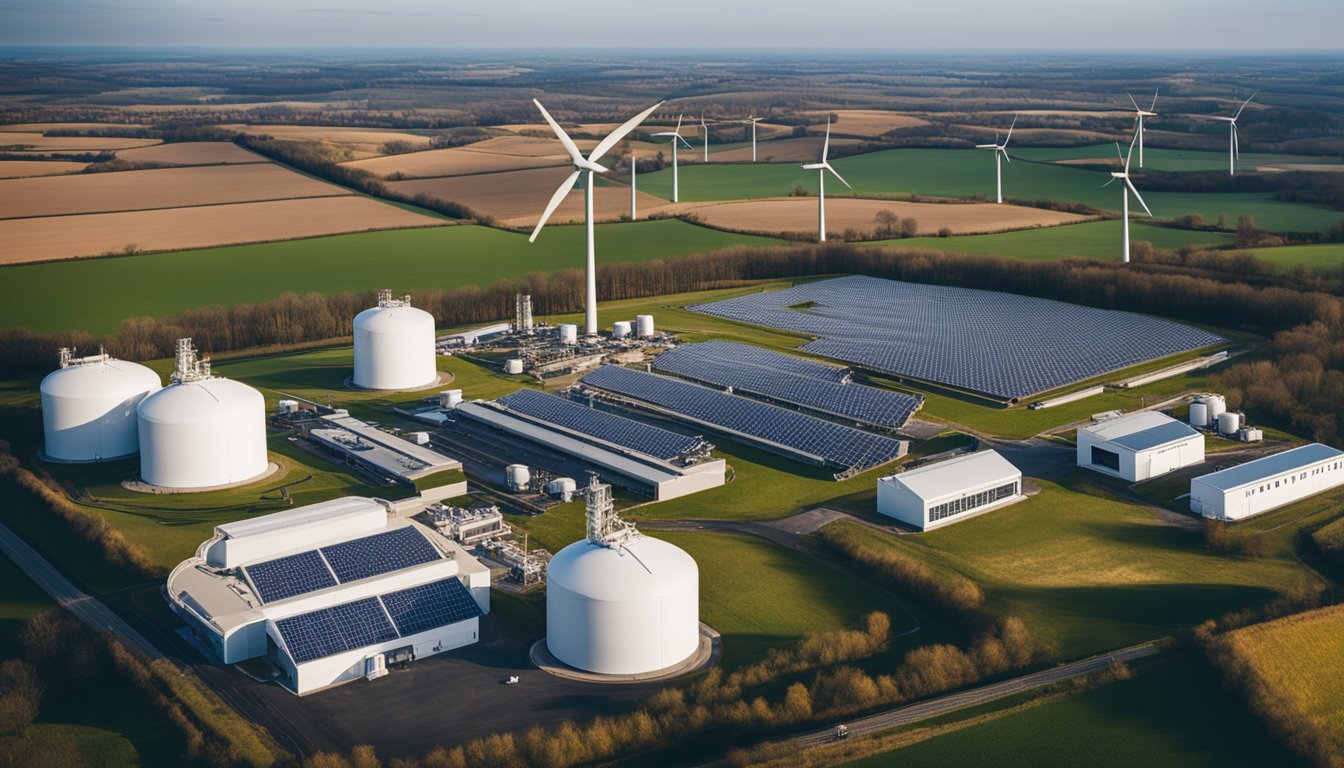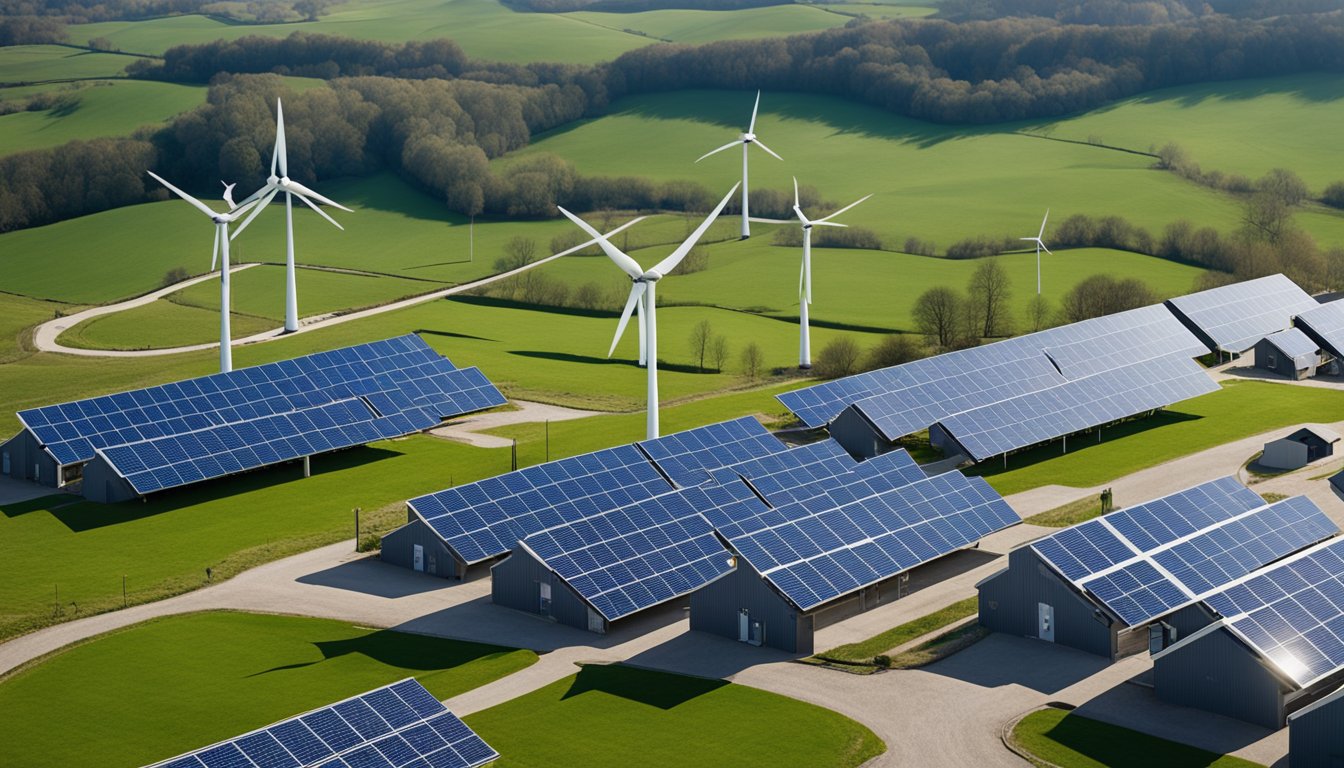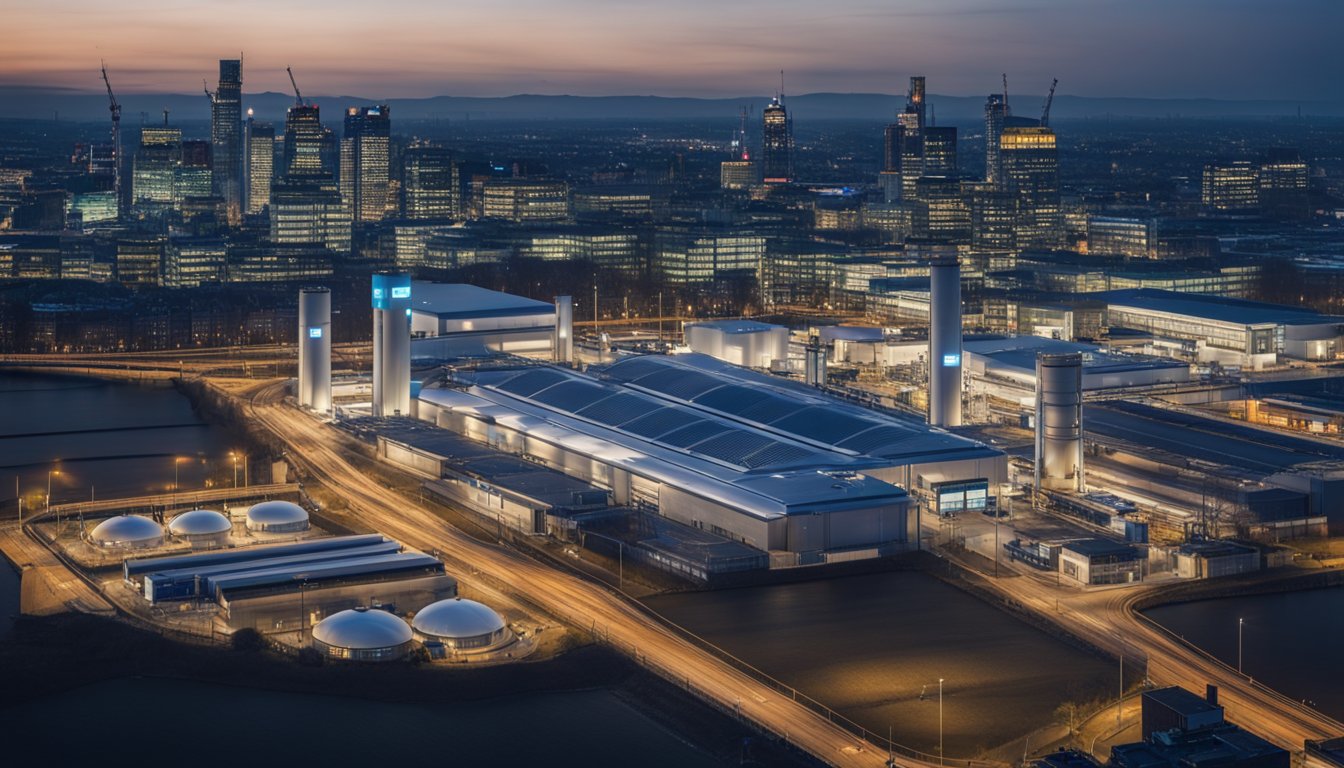Late updated: 12 Jan 2025 10:01
Written by: Eleanor Hartman
Exploring The Rise Of Green Hydrogen In The UK: A New Era for Energy Transition
The United Kingdom is at the forefront of a promising green revolution, with green hydrogen taking centre stage in the quest for cleaner energy solutions. With an ambitious target to ramp up green hydrogen production to 5 GW by 2030, the UK is placing significant emphasis on decarbonisation and achieving net-zero targets. This transformation is supported by strategic investments and partnerships across the nation, facilitating the growth of a robust hydrogen economy.

Emerging as a pivotal element in meeting climate change objectives, green hydrogen offers a sustainable alternative to traditional fossil fuels. It is produced using renewable energy sources, making it a critical ally in reducing carbon emissions. The UK government has laid out a comprehensive Hydrogen Strategy, aiming to bolster both green and low-carbon hydrogen production as part of its decarbonisation agenda.
As we explore this groundbreaking development, we will uncover the intricacies of the UK's strategy, offerings from public-private collaborations, and the potential hurdles in adopting hydrogen technology. Our journey into the rise of green hydrogen in the UK promises insightful perspectives on how this transition impacts our environmental and economic landscape.
Key Takeaways
- The UK aims to produce 5 GW of green hydrogen by 2030.
- Green hydrogen is central to achieving net-zero targets.
- Public-private partnerships support the hydrogen strategy.
Green Hydrogen Production in the UK
In our exploration of green hydrogen production in the UK, we delve into the technological innovations driving this sector, the current infrastructure, and the role of renewable energy sources in enhancing energy security.
Technological Foundations of Green Hydrogen
The foundation of green hydrogen production lies in the process of electrolysis, which uses renewable electricity to split water into hydrogen and oxygen. This method makes the hydrogen 'green' as it involves zero carbon emissions. The UK is investing significantly in developing advanced electrolysers that can efficiently produce hydrogen at scale. ITM Power, for instance, has established a gigafactory dedicated to electrolyser production, positioning the UK as a leader in hydrogen technology.
Current State of Green Hydrogen Infrastructure
In terms of infrastructure, England leads the UK's green hydrogen initiatives. Key projects such as the Teesside Hydrogen Hub are instrumental in ramping up production. The Pembroke Green Hydrogen Phase 2 project, with its 200MW capacity, marks a significant step towards achieving substantial hydrogen output. Government initiatives, such as the Net Zero Hydrogen Fund, illustrate a strong political and financial commitment to scaling up green hydrogen infrastructure across the nation.
Energy Security and Renewable Sources
Energy security is a critical consideration as the UK transitions to a sustainable future. The utilisation of renewable sources like solar and wind power is pivotal in producing green hydrogen. These renewable energies provide a reliable supply of electricity for electrolysis, ensuring that hydrogen production remains steady and sustainable. By diversifying our energy sources, the UK is enhancing its energy security while reducing reliance on fossil fuels. Renewable energy integration is thus essential in meeting the hydrogen strategy targets and contributing to national decarbonisation goals.
Realising the Hydrogen Strategy

Our exploration of the hydrogen strategy focuses on transitioning transport infrastructure, fostering robust economic policies, and actively engaging industry alongside society in this energy shift. Each component is critical in cultivating a thriving hydrogen economy in the UK.
Transitioning Transport to Hydrogen Fuel Cells
Hydrogen fuel cells promise a transformative shift in our transport sector by offering a cleaner alternative to traditional fuels.
One primary target is heavy goods vehicles (HGVs) and hydrogen buses, which contribute significantly to carbon emissions. By integrating hydrogen energy into their operations, these vehicles can reduce dependency on fossil fuels and achieve decarbonisation goals. Although hydrogen demand is growing, we must ramp up the production of both blue hydrogen and green hydrogen to meet public transport needs effectively.
Policies and Investment for a Hydrogen-Driven Economy
Stable policies and strategic investments are fundamental to realising the potential of the hydrogen economy.
Government initiatives are paving the way for private investment in research and development. These measures aim to enhance hydrogen skills and training, ensuring our workforce is well-equipped to handle evolving technologies. With a comprehensive UK Hydrogen Strategy, we can drive efficiencies and cost reductions in industrial processes, meeting net-zero emissions targets and supporting a sustainable future.
Engaging Industry and Society in the Hydrogen Shift
Industry collaboration and public engagement are essential in the hydrogen shift to foster widespread acceptance and integration.
Stakeholders, including energy companies and local businesses, play a vital role in advocating for hydrogen as a versatile energy carrier. By adopting hydrogen-driven practices, industries can significantly contribute to decarbonisation. Moreover, societal understanding of hydrogen benefits can engender greater public support, thus accelerating the strategy's success. Through collective action, we ensure that our transition to hydrogen is comprehensive and impactful.
Frequently Asked Questions

Green hydrogen is emerging as a crucial component in the UK's energy transformation. Significant investments and strategic planning are propelling the country towards greater adoption. We aim to clarify common inquiries about green hydrogen development and its anticipated role within the United Kingdom.
Which nation is at the forefront of green hydrogen development?
As of now, several countries are leading in green hydrogen advancement, each investing heavily in infrastructure and technology. Germany, Japan, and Australia are notable mentions. The UK, with its significant investment and policy support, is rapidly establishing itself as a leader in this arena.
What does the future hold for hydrogen energy in the United Kingdom?
The UK's future in hydrogen energy looks promising. The government has outlined ambitious sustainability targets, with green hydrogen playing an essential role. By 2050, it's anticipated that a considerable portion of the nation's energy consumption could be met with hydrogen, improving energy security and reducing emissions.
What are the main points of the United Kingdom's hydrogen strategy for 2024?
The UK's hydrogen strategy focuses on scaling up production and usage. It includes commitments to increase electrolyser capacity, enhance supply chain resilience, and support research and development. There is also a strong emphasis on creating jobs within this emerging industry, bolstering the economy while transitioning to renewable energy.
How is green hydrogen generated within the United Kingdom?
In the UK, green hydrogen is produced via electrolysis, which utilises electricity from renewable sources like wind and solar to split water into hydrogen and oxygen. The increasing deployment of offshore wind farms plays an integral role in supplying the required renewable energy for these processes.
What are the environmental impacts of green hydrogen production in the UK?
Green hydrogen production is touted for its environmental benefits, primarily its potential to significantly cut carbon emissions. As it relies on renewable energy, it avoids the CO2 emissions associated with fossil fuels. The process itself is clean, with water and oxygen being the only by-products.
How does the UK's investment in green hydrogen compare to other renewable energy sources?
The UK has channelled a substantial investment into green hydrogen, viewing it as complementary to other initiatives. While wind and solar dominate the renewable landscape, hydrogen provides versatility, especially in industries that are difficult to electrify. This balanced energy mix is vital for achieving net-zero targets.